
The Ultimate Air Treatment Guide
Air treatment is like life insurance for your air compressor; the more protected your system is, the longer it will last, and the less it will cost you in the long run.
After all, getting clean, dry air is cheaper than ruining your jobs, buying a new compressor, or replacing your tools.
This article covers the important things you need to know to keep your investment protected and fully operational for years to come.
Air Treatment Benefits - Why it Matters
The air treatment process cleans up and dries the compressed air you use to do work, along with regulating the temperature, too. If you don't use filtration, whatever materials that get into your storage tank can end up on your project and cause damage to your compressor system and air tools over time.
More importantly, hazardous particles (like atomized oil) can be sprayed into the air if an oil-separator isn't used, creating health concerns for anyone not wearing a respirator.
Filtering compressed air also plays a large role in the cost efficiency and longevity of your compressor, since clean air won't damage your air tools or cause leaks in your air lines from particulates scraping the walls in the air piping. After all, finding and fixing air leaks in your compressor system is more costly than preventative maintenance.
Parts of an Air Treatment System
Cleaning up and filtering compressed air can be done in multiple ways, and, if your compressor is properly sized, more air treatment is better than less. Each part of an air treatment system does a unique job, but all compressor components work together to give you the cleanest, dryest air possible. See the piping diagram below for a sample design of an air compressor system fitting together.
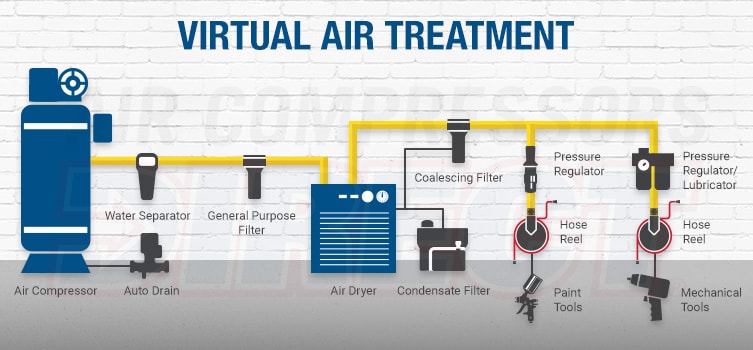
How Air Compressor Water Separators Work
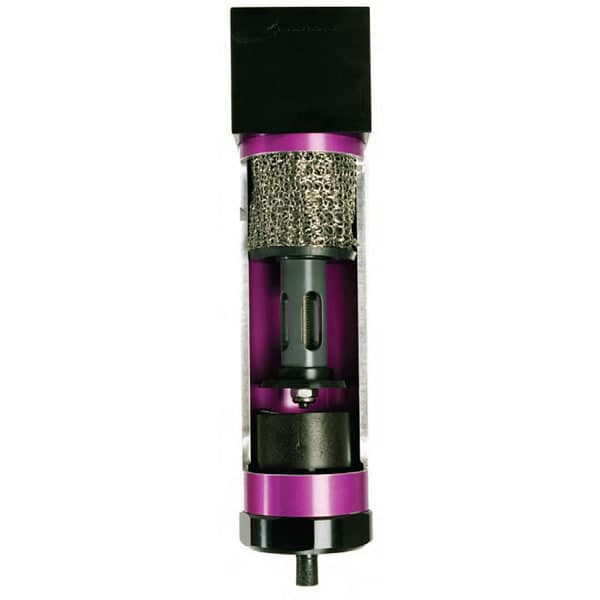 When air is compressed it gets hot, and water vapor that was in the air is squeezed out of it (like wringing out a sponge) - condensing into a liquid mixture of water and oil.
When air is compressed it gets hot, and water vapor that was in the air is squeezed out of it (like wringing out a sponge) - condensing into a liquid mixture of water and oil.
Water separator line filters are specifically designed to remove that moisture from your air supply before it goes through your lines or storage tank, ensuring a dry, clean stream of air moves through the hose and your air tool.
Air compressor water separators usually come before the air tank in your air system.
Even with a separator, moisture will still build up in your tank over time. To prevent buildup, it's important to release this moisture from the tank. A convenient and efficient upgrade is to install an automatic drain valve, which automatically opens the drain and empties water without user intervention.
Types of Air-Line Filters
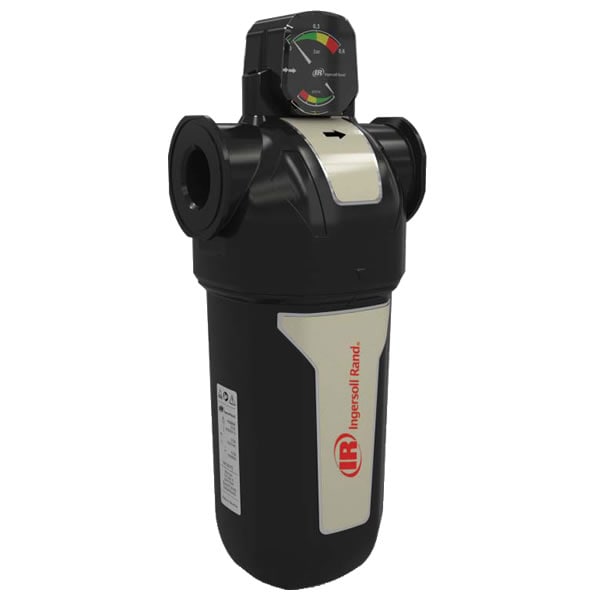 After excess moisture is removed from the air, other types of air compressor air filters can be used to further filter out remaining contaminants and particulates.
After excess moisture is removed from the air, other types of air compressor air filters can be used to further filter out remaining contaminants and particulates.
General-purpose air compressor filters are a good place to start since they can be used to remove moderate amounts of water, oil, and dirt from the line.
However, depending on your application, you may need a more powerful filter capable of removing contaminants as small as 0.01 microns, and combination filtration systems that remove both oil and water at the same point in the line are often used for these applications, called water-oil separators.
Pharmaceutical plants and labs often use carbon air filters (activated carbon filters) to remove oil vapors and odors from the air.
High-efficiency oil coalescing filters will go one step further and remove water and oil aerosol particulates up to 0.01 microns in size, effectively removing more than 99 percent of particulates from the compressed air, making them ideal for applications like auto-painting.
Lubricators
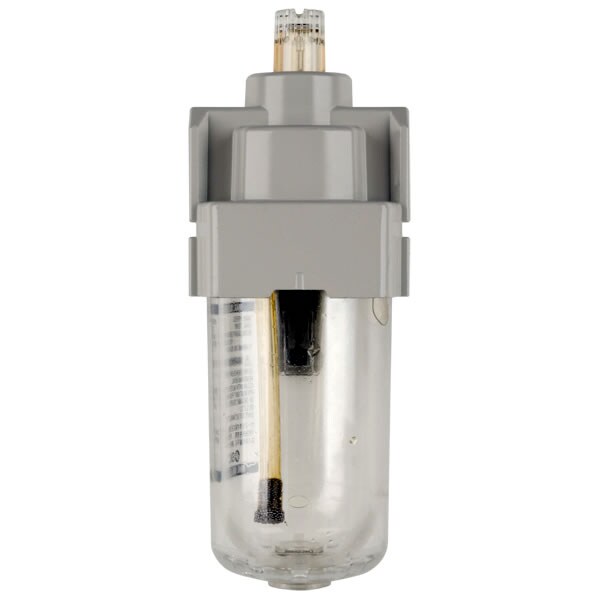 Lubricators are normally used to lubricate air tools and are attached right before your pneumatic tool/equipment.
Lubricators are normally used to lubricate air tools and are attached right before your pneumatic tool/equipment.
Depending on the application, some pneumatic air tools need lubrication to operate correctly, and often times when air tool oilers are used, they are paired with a water separator to prevent moisture from getting into the air and causing damage to expensive equipment.
Although lubricators don't affect the overall treatment of the air, they are important to mention because they can be paired with other types of air-line filters or be used in custom setups in an industrial compressed air system, such as being used in tandem with a pneumatic actuator or solenoid valves.
Air Dryers
Compressed air dryers remove moisture from compressed air traveling through your air system and prevent damage to pneumatic tools, machinery, and in some cases, the product being worked on. Refrigerated air dryers are the best at removing the most water.
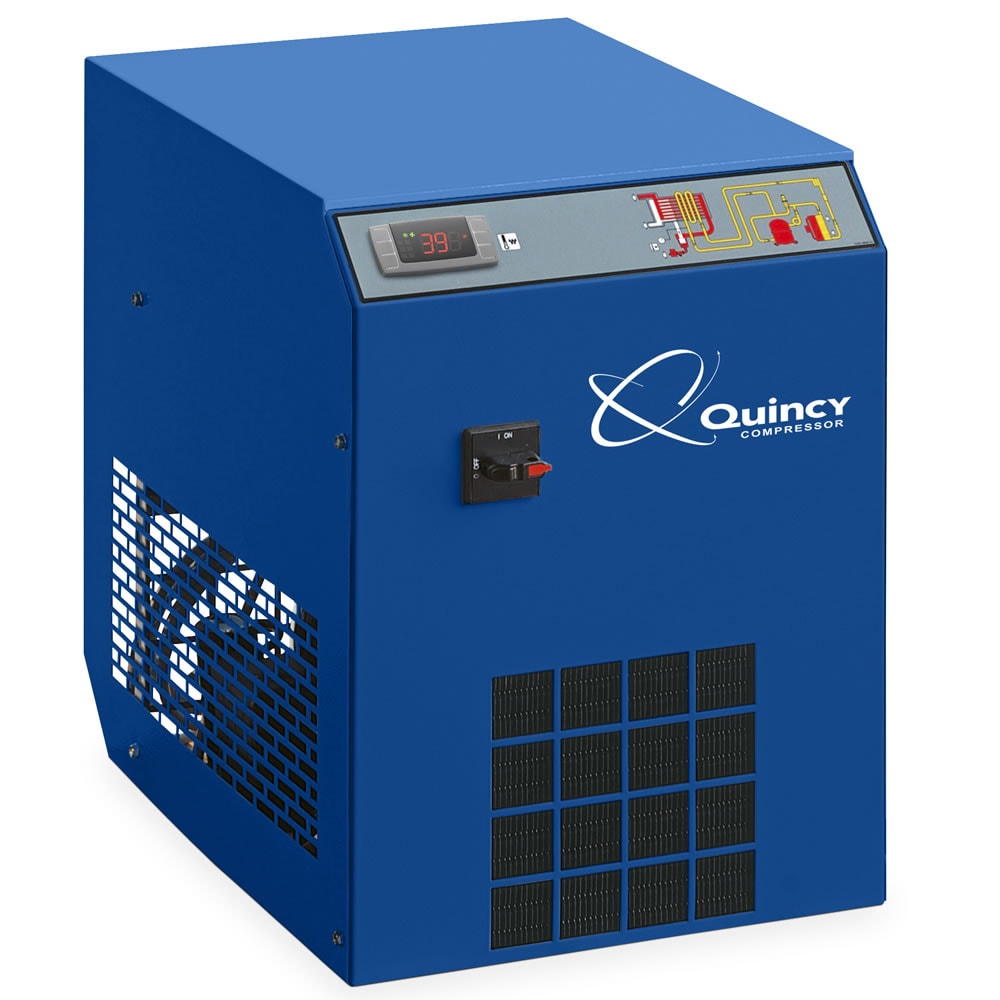 There are multiple varieties of compressed air dryers that serve different purposes, ranging from cycling and non-cycling refrigerated air dryers, non-cycling high-temperature dryers made to handle the high-heat setups when using compressors without an aftercooler, as well as membrane and desiccant air dryers that use different technologies to remove moisture from the air.
There are multiple varieties of compressed air dryers that serve different purposes, ranging from cycling and non-cycling refrigerated air dryers, non-cycling high-temperature dryers made to handle the high-heat setups when using compressors without an aftercooler, as well as membrane and desiccant air dryers that use different technologies to remove moisture from the air.
To ensure the correct operation of a desiccant dryer, an oil-coalescing filter must be placed before it in the air system.
Air Compressor Piping Systems
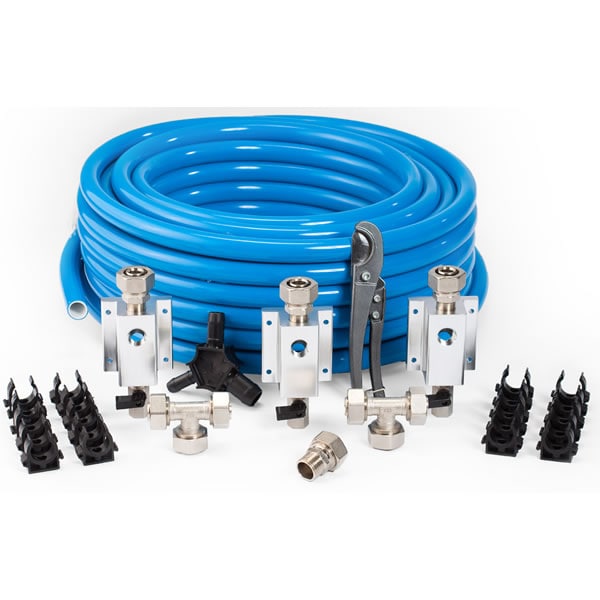 There are many additional devices that can be installed to further clean the air and regulate airflow and pressure (PSI and CFM). After the treated air is dried, filtered, compressed, and stored, it will eventually travel through air delivery piping to the hose and air tool, called the
There are many additional devices that can be installed to further clean the air and regulate airflow and pressure (PSI and CFM). After the treated air is dried, filtered, compressed, and stored, it will eventually travel through air delivery piping to the hose and air tool, called the
point-of-use.
Regulators and lubricators can be installed along the air piping line, giving you further control over air treatment as it gets to your air tool.
Heavy copper and black steel piping used to be the only options for building air lines to transport compressed air. It was expensive and labor-intensive to install in workshops and industrial spaces, and when air leaks occurred, it was difficult to repair or replace part of the line.
Today, new advances in piping technology make it much cheaper and easier to install and change the piping configuration of your piping to get compressed air where you need it.
Companies like RapidAir and Transair have created air delivery systems that use aluminum and polyethylene piping with detachable joints that can bend and interlock in almost any configuration you can imagine, making it simpler than ever to change or replace a part of your line with much less effort.
Air Regulators
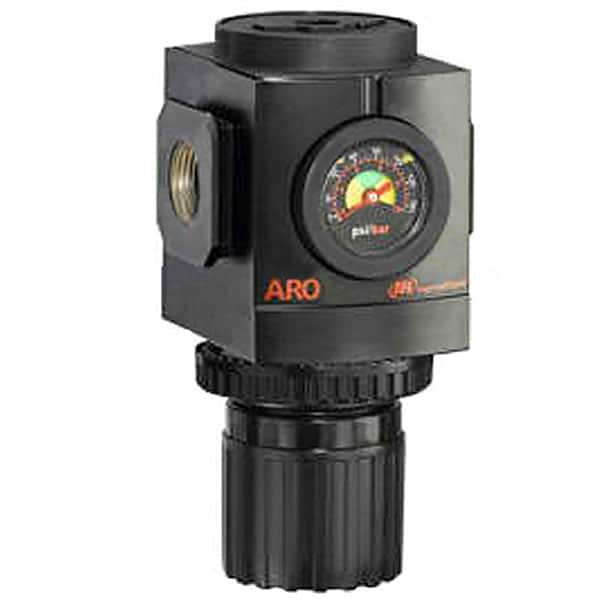 Regulators regulate air pressure and flow, and allow you to control the outlet pressure for precision and to avoid pressure spikes and drops at the point-of-use. They work like an air checkpoint that helps keep air pressure at the levels required for efficiency and safety.
Regulators regulate air pressure and flow, and allow you to control the outlet pressure for precision and to avoid pressure spikes and drops at the point-of-use. They work like an air checkpoint that helps keep air pressure at the levels required for efficiency and safety.
Air regulators can be attached to any section of your air piping system, however, the best results are by installing them near the point of use. Regulators can control and restrict the airflow if necessary, and help prevent damage to your air tools due to pressure levels being too high for the tool.
Take Care of Your Air System
No matter what size your shop is, air treatment is critical to maintaining a long-lasting, dependable, and clean compressed air system that will continue to deliver year after year. However, just like the filter in your furnace, compressed air filters need to be cleaned and changed regularly, or they won't make much of a difference in the long run.
They say an ounce of prevention is worth a pound of cure, and with air treatment, this is true. Routine maintenance and the use of the filtration devices above will ensure your compressor is healthy and up to the task, no matter what your next project will be.
Commercial Efficiency Navigation:
Main Guide | Commercial Buyer's Guide| Reduce Energy Costs | How to Audit Your System | VSD Technology| Air Treatment Systems

